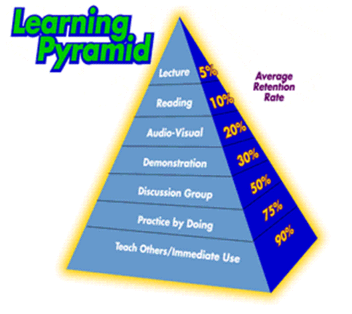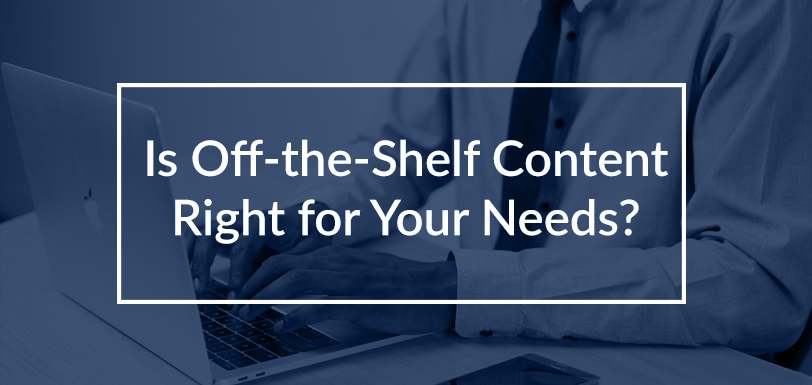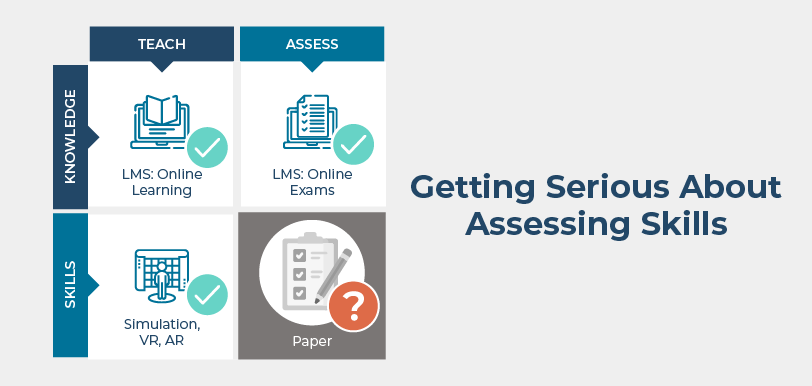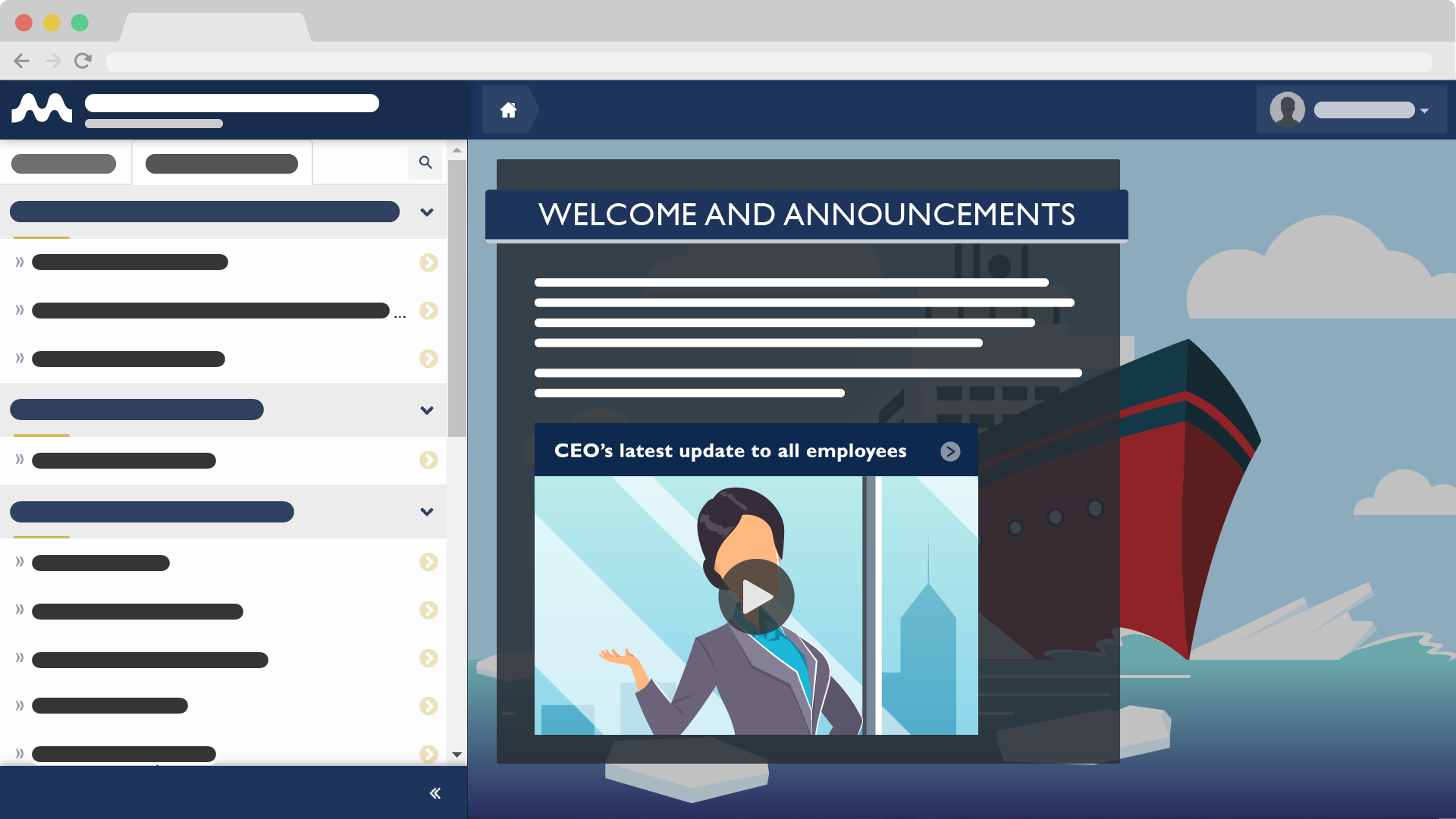Effective Ways of Combining Media for Training
Feb 15, 2017 Murray Goldberg 0 eLearning, Maritime Training, Training ContentIntroduction
One attribute that makes an eLearning implementation effective and efficient is the appropriate use of media. And by media, I am referring to the choice (and combination) of text, imagery, video, simulations and even gaming as ways of delivering learning content.
But what media should we use and how do we use it?
This is the second blog post in a series that looks at the media choices we have as maritime trainers. The first post explored the use of text in online learning. This second blog post will continue by examining the most effective ways to combine multiple media types. The next article will look at the strengths and limitations of individual media choices (text, imagery, video, …).
If you would like to receive an email notification when that article is up, please sign up here.
The Cone of Learning
As maritime trainers we may have seen something similar to the following image (copied from a university instructor’s website). It attempts to give information on the effectiveness of learning media and modes:

Learning Pyramid
It looks like great information. Or … does it? Should we believe this?
Well, it turns out that we should not! Despite how common this view is and how authentic it may sound, it’s simply not true. It is damaging because people routinely make media decisions based on diagrams like this.
Let’s begin by debunking the information presented by the “Cone of Learning” pictured above.
What Media is Best? Dispelling the Myths
It is easy to believe the misinformation shown above. It sounds logical. But if you examine it a little more closely, the troubling signs become apparent.
First – the data is simply too convenient. Real research rarely yields percentages that are almost all conveniently multiples of 10. Likewise – how could such numbers even exist when we know that different people learn differently? They can’t.
And even if you assume that this information is a generalization of real research, it turns out you’d be wrong. In fact, when looking online for the image above, I was amazed to find hundreds like it – with different numbers and different descriptions of the “learning media”.
I read a great paper by Cisco and the Metiri group titled “Multimodal Learning Through Media: What the Research Says“. The first half of this paper examines the origins of this incorrect information. It is actually a very interesting read on how false information can be perpetuated and published as authentic – even by credible sources. There was an original kernel of truth, but it was lost long ago in the chain of reproductions.
To quote the Cisco paper (emphasis mine):
The person(s) who [incorrectly] added percentages to the cone of learning were looking for a silver bullet, a simplistic approach to a complex issue. A closer look now reveals that one size does not fit all learners. As it turns out, doing is not always more efficient than seeing, and seeing is not always more effective than reading. Informed educators understand that the optimum design depends on the content, context, and the learner. For example, the bogus percentages on the cone would suggest that engaging students in collaborative learning in general would result in higher levels of learning than would a lesson where a student listens to narration or reads text about the topic. The reality is that, for the novice student engaged in basic skill building …, individual learning through reading or simple drill and practice might be the optimal learning design. Yet, for a different learning objective – for instance, understanding cause and effect … a simulation might be the most effective learning approach.
So – the bottom line is that every media has its place. The choice of media depends on the learner, the learning content and (I would add) even the costs of creation and maintenance. Where does this leave us in terms of helping choose media?
It turns out that there are actually two questions here. The obvious one is: “what media is best for a particular learning objective or learner”?
The other question: “how do we combine media types”?
It has been found that combining media types is typically more effective than using a single media in isolation. This makes intuitive sense – if different learners learn differently, then giving them more media choices is more likely to appeal to a broader range of learners. Different media types each bring their own strengths to the learning experience. However, some combinations are better than others, and the way we combine them makes a difference.
Let’s examine what the research says about combining media types.
Combining Media Types
The Cisco paper, cited at the beginning of this article, has surveyed the research and has summarized a set of principles which provide some very good, concrete advice on the subject. The main principles are as follows, with short comments (written by me) below each:
1. Multimedia Principle: Retention is improved through words and pictures rather than through words alone.
Adding images to text not only provides additional information, but does so by using a media with different strengths. Text allows for deep and detailed descriptions. Images help in context setting and familiarization. The outcome is improved learning.
2. Spatial Contiguity Principle: Students learn better when corresponding words and pictures are presented near each other rather than far from each other on the page or screen.
3. Temporal Contiguity Principle: Students learn better when corresponding words and pictures are presented simultaneously rather than successively.
The two preceding ones are simple common sense. For media to work well together they must be presented together – closely related in time and location.
4. Coherence Principle: Students learn better when extraneous words, pictures, and sounds are excluded rather than included.
Again – common sense. Learning materials should get to the point and resist unneeded information. This is one reason adaptive learning works so well as it tends to target the learner directly with the information he or she specifically requires at that time. In my view adaptive learning is a critical tool for maritime training – more so than for almost any other industry.
5. Modality Principle: Students learn better from animation and narration than from animation and on-screen text.
This is an interesting result. Intuitively it makes sense because both animation and text require the visual attention. Using both in the same lesson likely tends to create competition for the visual attention of the learner – rendering the combination less effective.
6. Redundancy Principle: Students learn better when [the same] information is not represented in more than one modality – redundancy interferes with learning.
This one is a bit of a surprise to me as I would have expected redundancy of this kind to reinforce learning. But the message is that when we combine media types, the information that each media presents should reinforce the information from the other media, not duplicate it.
This finding speaks against the use of text with an audio overlay of someone reading the text to the learner – a common practice. Of course, this may still be a useful technique for some learners – especially if their first language is other than the language of instruction.
7. Direct Manipulation Principle: As the complexity of the materials increase, the impact of direct manipulation of the learning materials (animation, pacing) on transfer also increases.
To me the take-away from this finding is that learning outcomes are improved when the learner has some control over the learning experience. For example, allowing the learner to go more slowly, review materials, or interact with simulations all have positive learning effects for complex subjects.
Conclusion
If you are designing a maritime learning program, this is important information to consider. But even if you are not, there are some important takeaways here which can help you evaluate learning programs you may encounter as a purchaser or trainer of maritime learning content. To summarize:
- Despite popular belief to the contrary, text can be an excellent choice for learning content in certain circumstances.
- There is no such thing as a “simple ranking” of media types, with one type being a universally better choice than any other. Each has strengths and limitations depending on the learner and the context. We will cover this point more in the next article.
If you would like to receive an email notification when that article is ready, please sign up here if you have not already done so. - Combining media choices almost always yields a better experience than the use of any one choice alone. However, the way they are combined is important. There are some simple rules of thumb to get the most out of our training media.
Thanks for reading, and until the next article – train well and sail safely!
Follow this Blog!
Receive email notifications whenever a new maritime training article is posted. Enter your email address below:
Interested in Marine Learning Systems?
Contact us here to learn how you can upgrade your training delivery and management process to achieve superior safety and crew performance.






